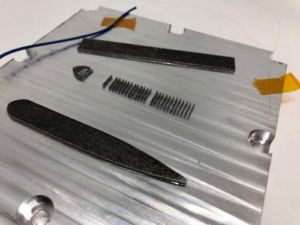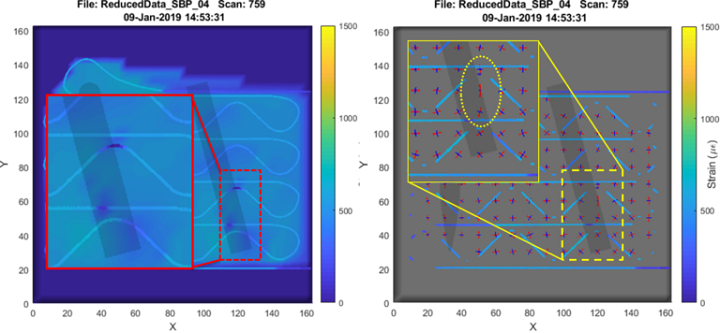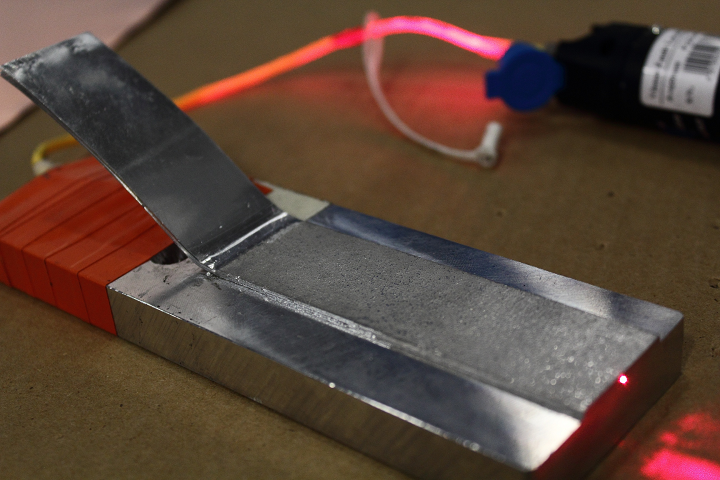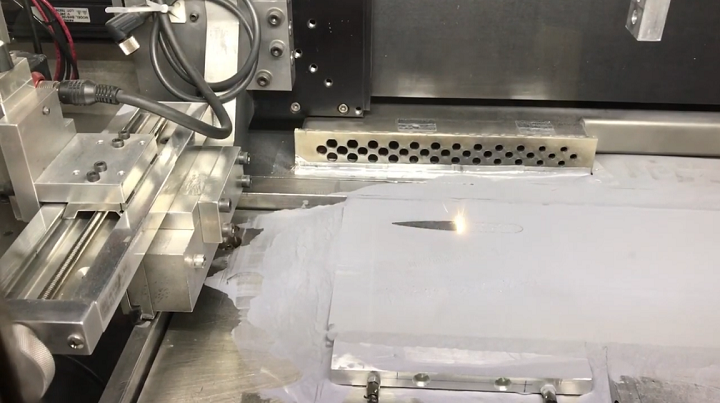Last year, Ohio-based company Fabrisonic teamed up with optical measurement technology leader Luna Innovations to make 3D printed smart structures, using its patented hybrid metal Ultrasonic Additive Manufacturing (UAM) process, that had embedded fiber optic sensors. Together, the companies planned to use the structures to determine such things as finding a critical component’s exact strain during operation.
The partners were awarded two separate research contracts from the SBIR/STTR program for this work, which began with developing a smart pipe for fuel systems at NASA. The second contract had an overall goal of improving the methodology for powder bed fusion (PBF) 3D printing processes, determining how to properly measure capability and stress, and anticipating any issues ahead of time.
“Although our process does not use powders, we have lots of friends in industry that use powder based processes,” Fabrisonic’s President and CEO Mark Norfolk wrote in a company post. “One of the biggest complaints we hear from our powder brethren is consternation around build plates.”
As Norfolk explains in his post, parts can sometimes debond or delaminate from the plate during 3D printing, which, because it’s buried in powder, is not the easiest thing to detect. In addition, build plate bolts can break from excess residual stress, and this built up stress also causes the plate itself to distort.
“We don’t understand how stress builds up around individual parts during a build leading to distorted final parts,” Norfolk stated.
This pain point was brought up with EWI, which is what led to a 3D printed build plate with sensors embedded inside – the smart baseplate.
Under the Phase 1 STTR, Fabrisonic and Luna Innovations joined forces with EWI in order to design and build a smart, instrumented PBF build plate for the Defense Logistics Agency (DLA). Using Fabrisonic’s UAM technology, the team fabricated a build plate with integrated strain and temperature sensing, and leveraged it for a PBF in-process quality tool.
 Utilizing its solid-state UAM process, Fabrisonic 3D printed a metal build plate with one embedded fiber optic sensor; this fiber optic was embedded with an undulating pattern, which makes it possible to resolve strain across the plate. The smart baseplate was placed inside EWI’s PBF 3D printer, and the team tried to print a part with features that were not ideal.
Utilizing its solid-state UAM process, Fabrisonic 3D printed a metal build plate with one embedded fiber optic sensor; this fiber optic was embedded with an undulating pattern, which makes it possible to resolve strain across the plate. The smart baseplate was placed inside EWI’s PBF 3D printer, and the team tried to print a part with features that were not ideal.
The smart device was able to pick up plenty of information, such as bulk stress state and the fact that defects showed up early in the build as large compressive strains at localized points on the plate. Additionally, the team learned that they could see the slow delamination of a figure in the data, even though the recoater blade had never hit the build, and that both resolution and scan rate were high enough “to actually discern the scan strategy of each layer.”
Check out the video below to see true strain-time plots resolved in the x-y plane on the left side, and the raw data along the fiber on the right:
“These colorful strain-time histories easily communicate what is happening in the build,” Norfolk explained. “However, further data slicing can provide a deep understanding of the quality of the build.”
For example, you can analyze individual pixels to find sudden changes in vector, which is a sign of build issues, or compare the time histories of adjacent pixels – another obvious sign that all is not well.

Figure 1. As a crack forms and propagates, it is normal to see a transverse compression form at the point of separation (left). Strain vector changes also highlight certain flaws (right).
Fabrisonic, Luna Innovations, and EWI believe that their approach could potentially be used to monitor build quality during PBF 3D printing. For instance, during multi-part builds, they’ve already determined that build flaws can be seen in a single part, which allows the operator to abort the offending feature before other parts are negatively affected. The team has received a Phase II STTR from the DLA to continue the work.
“We hope to expand the capabilities by refining data mining techniques and embedding more sensors,” Norfolk concluded.
Discuss this story and other 3D printing topics at 3DPrintBoard.com or share your thoughts in the Facebook comments below.
[Images: Fabrisonic]Subscribe to Our Email Newsletter
Stay up-to-date on all the latest news from the 3D printing industry and receive information and offers from third party vendors.
You May Also Like
Gorilla Sports GE’s First 3D Printed Titanium Cast
How do you help a gorilla with a broken arm? Sounds like the start of a bad joke a zookeeper might tell, but it’s an actual dilemma recently faced by...
Nylon 3D Printed Parts Made More Functional with Coatings & Colors
Parts 3D printed from polyamide (PA, Nylon) 12 using powder bed fusion (PBF) are a mainstay in the additive manufacturing (AM) industry. While post-finishing processes have improved the porosity of...
$25M to Back Sintavia’s Largest Expansion of Metal 3D Printing Capacity Since 2019
Sintavia, the digital manufacturing company specializing in mission-critical parts for strategic sectors, announced a $25 million investment to increase its production capacity, the largest expansion to its operations since 2019....
Velo3D Initiates Public Offering in a Bid to Strengthen Financial Foundations and Drive Future Growth
Velo3D (NYSE: VLD) has been among a number of publicly traded 3D printing firms that have attempted to weather the current macroeconomic climate. After posting a challenging financial report for 2023,...


































